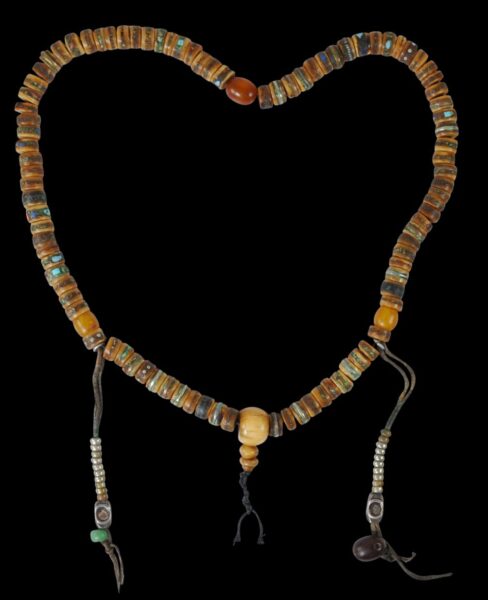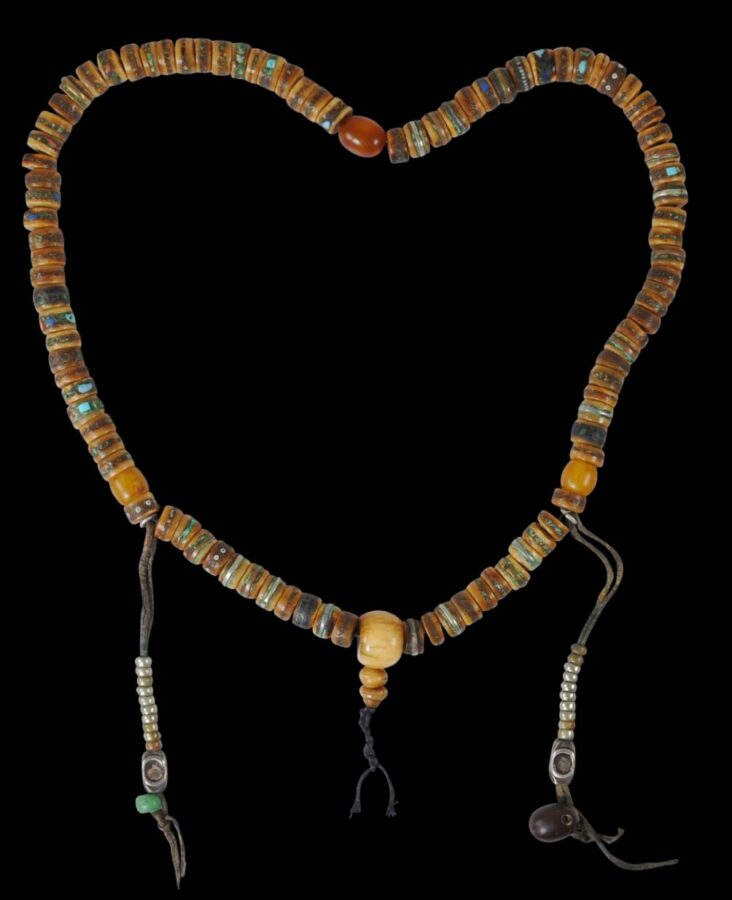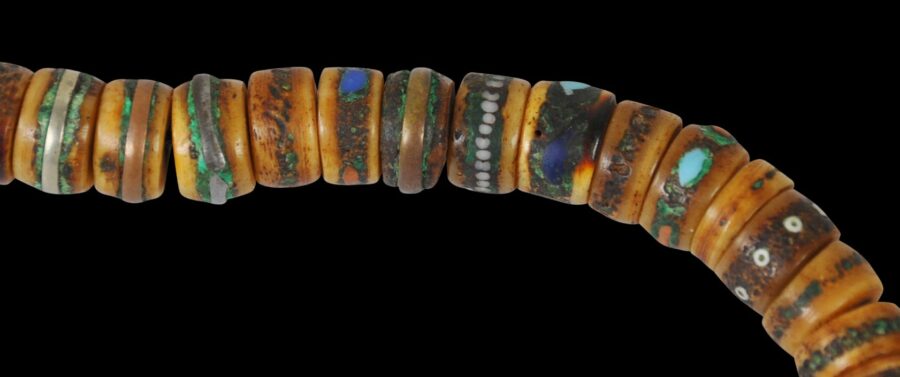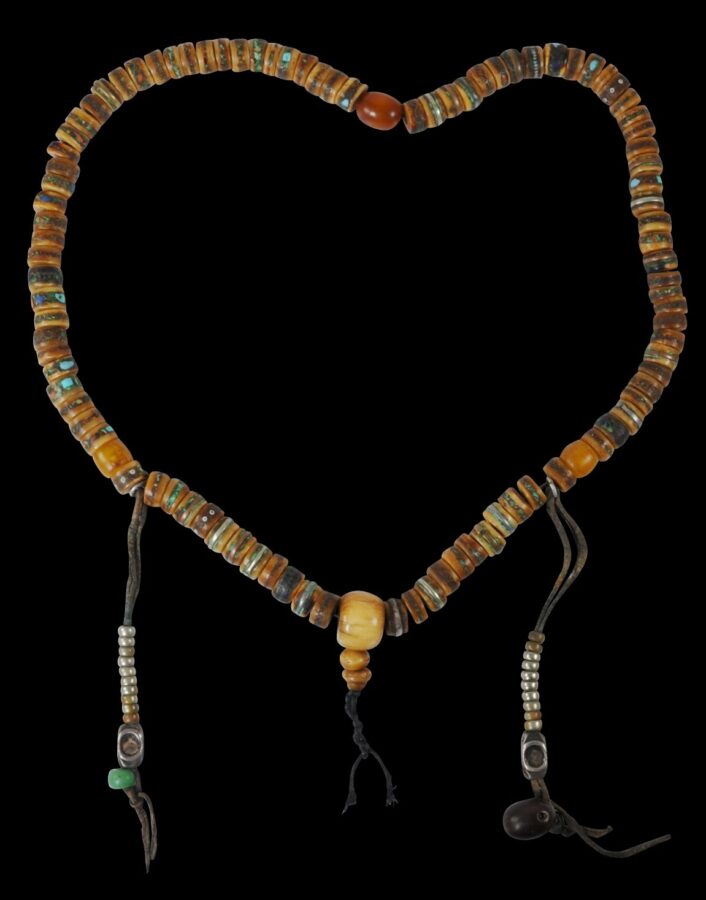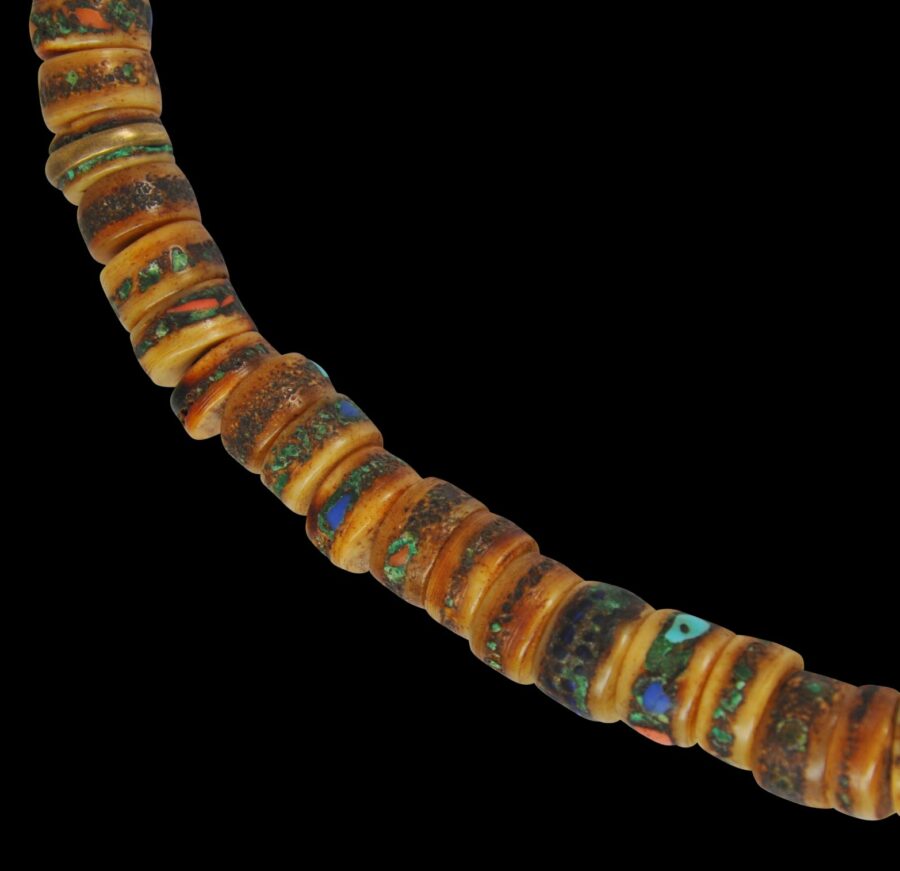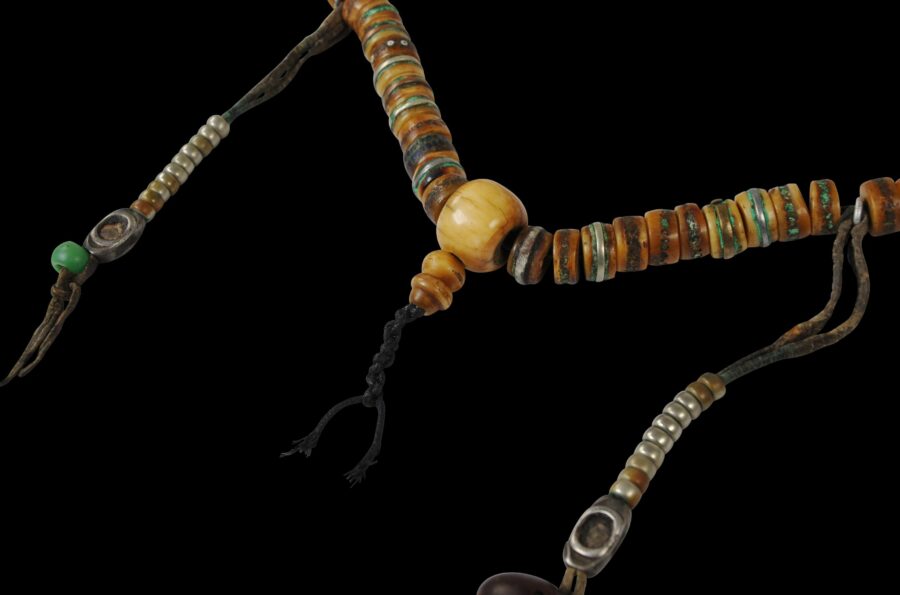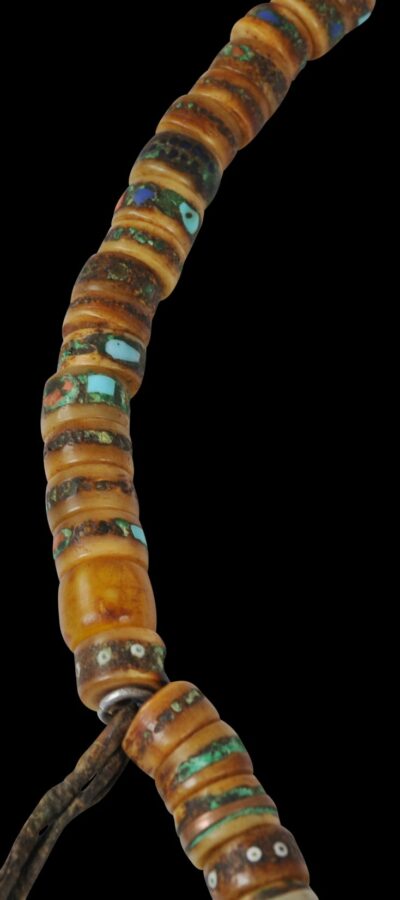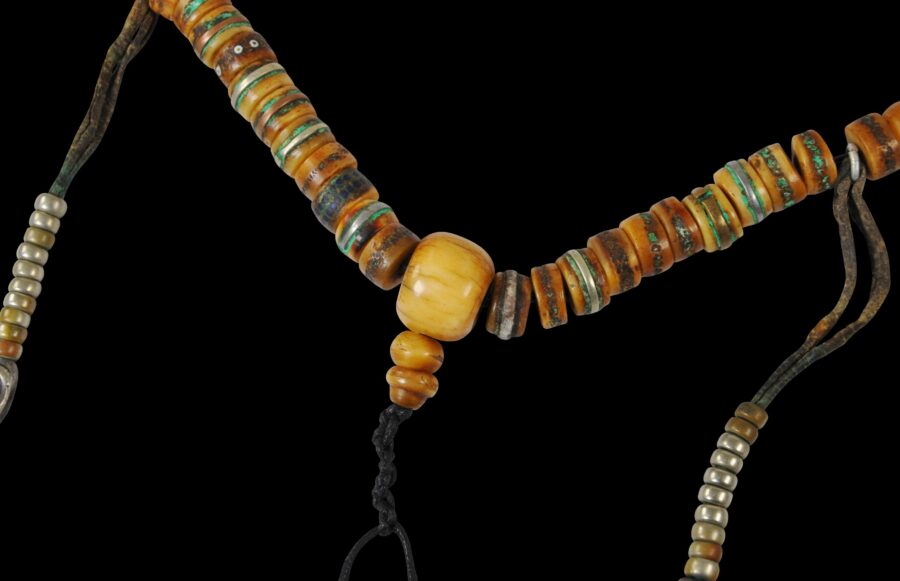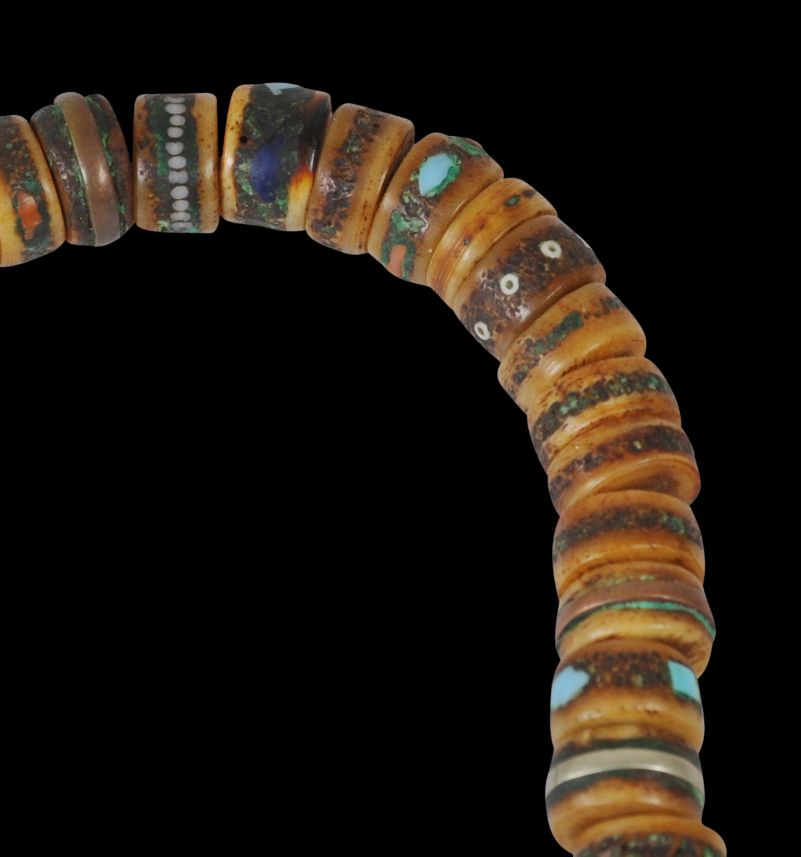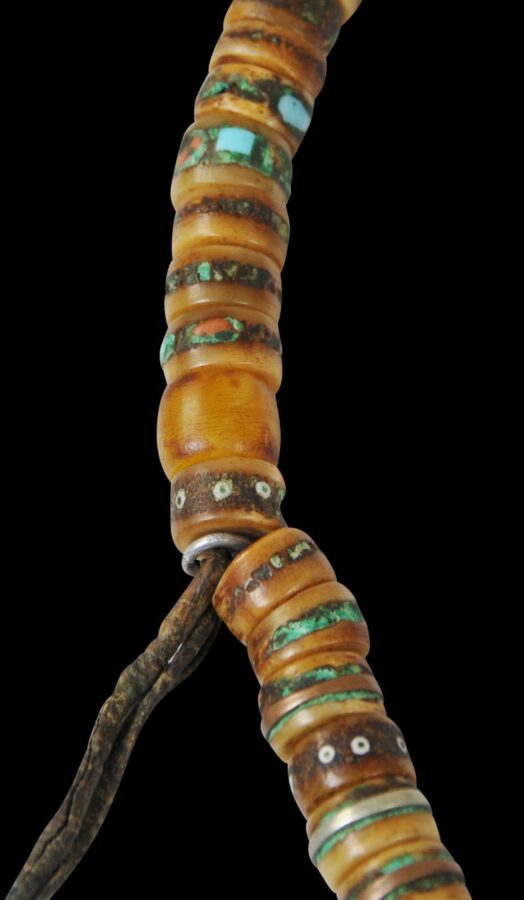This Tibetan Buddhist rosary (sin-‘phen) is unusual. It is composed of large human bone beads. Tibetan rosary beads composed of human bone are rare and are known as Mi Mgo’i Phreng Ba. They were used for wrathful-deity rituals. Most beads have been inlaid or inset with either small lapis lazuli, shell, coral and turquoise chips. Some are set with central copper and silver rings. Sets of rosaries so inset were reserved for the highest dignitaries, (Henss, 2020, p. 152). In addition, there are several old amber beads, two strings of silver and brass counter beads, a green glass beads and a bead from an old seed. The central marker bead comprises an ancient tusk bead.
Each element has superb patina from age and wear.
Buddhist rosaries evolved from ancient Hindu-Indian mala prayer beads. In Tibet, they were used by both laymen and monks. They are supposed to comprise 108 beads plus others as counters, although sectarian variants might have as many as 111 beads plus counters and as few as 100. The main prayer beads were used to count repetitions of prayers and the counters were used to record multiples of the main beads, so that thousands of repetitions could be counted. Users typically held them in their left hands whilst chanting.
The set here is in a fine, stable condition. It is a superb and rare example.
It has come from an old, private London collection acquired over decades.
References
Daalder, T., Ethnic Jewellery and Adornment: Australia, Oceania, Asia, Africa, Ethnic Art Press/Macmillan, 2009.
Henss, M., Buddhist Ritual Art of Tibet: A Handbook on Ceremonial Objects and Ritual Furnishings in the Tibetan Temple, Arnoldsche, 2020.
Reynolds, V., Tibet: A Lost World: The Newark Museum Collection of Tibetan Art and Ethnology, The American Federation of Arts, 1978.
Sherr Dubin, L., The Worldwide History of Beads, Thames & Hudson, 2009.


